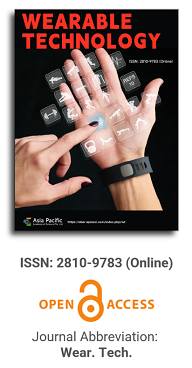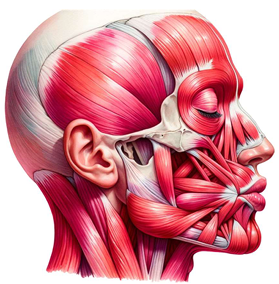

This paper delves deeply into the innovative realm of integrating human emotions with wearable technology. The primary focus is on the conceptualization and development of a kiss transfer device that harnesses the power of wearable technology to bridge the physical gap in human-human interactions. By investigating the intricate nuances of the human-human kissing process, the research seeks to replicate this intimate gesture through a technological medium. The paper not only elaborates on the anatomy, evolution, and hormonal dynamics of kissing but also underscores the transformative potential of wearable technology in capturing and transmitting these intimate moments. This exploration opens up new horizons for long-distance relationships, offering a tangible touchpoint that goes beyond traditional communication methods. Through this pioneering work, the research positions wearable technology as not just a tool for communication but as an extension of our human emotions and expressions.

Full Issue
| View or download the full issue |
Wearable technology, also known as wearables, smartwear, skin electronics of fashion technology, is a category of hands-free electronic devices that can be worn as accessories or embedded into clothes or skin surface. The usage involves all kinds of industries such as medicine, sports, apparel, health monitoring and management, and artificial intelligence.
As a new journal focused on wearable technology, we hope to provide a good communication platform for scholars and experts from various industries. It is our honor to invite Prof. Jun Qiu from Tsinghua University and Prof. Pibo Ma from Jiangnan University to write articles involving different fields for the first issue. Prof. Jun Qiu lab reviewed the strategic choices for high-quality development of smart wearable sporting goods industry. In this article, a strategic policy of people-oriented is established, focusing on research and development, and scientific management. Prof. Pibo Ma and his team pointed out that the type, structure and weaving method of the conductive yarn were important factors which affect the performance and wearing comfort of knitted sensors, and the electrical characteristics of two-dimensional extension and three-dimensional deformation in the strain stretching process of knitted sensors determined the effective strain sensing range.
Furthermore, we collected several other excellent articles on application of wearable technology and mechanisms or models about this technology, hoping to show an overview of this rapidly developed subject.
Editor-in-chief
Dr. Zhen CaoWith the rise of electronic health services, wireless body area network (WBAN) technology has attracted great international attention. The body area network can obtain human vital sign parameters in its natural state, and support applications in areas such as clinical diagnosis and treatment, emergency rescue and treatment, and health information services. This article introduces the concept of body area network and the electronic medical architecture of body area network, summarizes the advantages of body area network: in low data rate scenarios, the system power consumption of body area network is much lower than that of other wireless communication standards, providing more choices for special frequency bands for medical equipment (500 MHz to 5 GHZ), thereby reducing the interference problem between different communications; proposing bottlenecks and hot spots of body area network: ultra-low power consumption requirements of sensor nodes and hardware resource constraints with limited computing power, and data security protection problems in body area network sensor nodes; the application of body area network in emergency scenarios was analyzed, and the hot spots of body area network research in the field of emergency were summarized and predicted: the development of ultra-low-power chips, wearable wireless nodes, intelligent medical terminals, health and monitoring instruments and other devices and equipment.
Knitted sensor has the advantages of lightness, conformity, good strain tensile recovery and formability, which provides a possibility for flexible and non-inductive motion signal monitoring and smart wearable sports health clothing preparation. This paper reviews the preparation methods of knitted sensors, analyzes the influence of yarn types, fabric microstructure and tensile sensing direction on its sensing performance, and compares the advantages and disadvantages of knitted sensors in the fields of life and health, human movement and other fields. It is pointed out that the type, structure and weaving method of the conductive yarn are important factors affecting the performance and wearing comfort of knitted sensors, and the electrical characteristics of the two-dimensional extension and three-dimensional deformation in the strain stretching process of knitted sensors determine the effective strain sensing range. This paper outlines the development opportunities and challenges faced by knitted sensors in the field of sports and health clothing.
The inaccuracy of acute altitude sickness screening has brought great challenges to power grid construction workers in high-altitude areas. Human vital signs monitoring technology is an effective technical means to prevent people from developing altitude sickness. This paper proposes a monitoring and evaluation platform for high altitude sickness in power grid operations based on information entropy of the causes of the illness. First, the vital characteristics data of workers are collected through sensors such as blood pressure and blood oxygen. Secondly, the collected data is transmitted back to the platform by using the Internet of Things technology. The information entropy establishes an analysis model of altitude sickness and generates personnel evaluation reports and treatment recommendations. Finally, the application results of the platform verified that the preventive effect of the platform is much higher than that of the pre-existing physical examination method.
In order to effectively improve the accuracy of identifying the gait pattern of wearable sensing data, this paper proposes a new model for deep learning gait mode discrimination that integrates convolutional neural network and long short-term memory neural network, which makes full use of the convolutional neural network to obtain the most local spatial characteristics of data and the long short-term memory neural network to obtain the inherent characteristics of the data, and effectively excavates the hidden high-dimensional, nonlinear, time-space gait characteristics of random wearable sensing timing gait data that are closely related to gait pattern changes, to improve the classification performance of gait mode. The effectiveness of the proposed model in this paper is evaluated using the HAR dataset from University of California UCI database. The experiment results showed that the proposed model in this paper can effectively obtain the time-space gait characteristics embedded in the wearable sensor gait data, and the classification accuracy can reach 91.45%, the precision rate 91.54%, and the recall rate 91.53%, and the classification performance is significantly better than that of the traditional machine learning model, which provides a new solution for accurately identifying the gait mode of wearable sensor data.
Use research methods such as survey research methods and literature data methods, and use strategic management theory to analyze the strategic development environment of the smart wearable sporting goods industry. On this basis, the strategic goal of high-quality development of the smart wearable sporting goods industry is clarified. It establishes a strategic policy of people-oriented, focuses on research and development, and scientific management, and proposes a strategic development path for cultivating leading enterprises, developing industrial clusters, and promoting research and development innovation. In order to promote the high-quality development of the smart wearable sporting goods industry in the new era, specific strategic safeguard measures are putted forward in terms of providing talent support for industrial development and improving the legal system for the development of the smart wearable sporting goods industry to achieve high-quality development.

Prof. Zhen Cao
College of Information Science & Electronic Engineering, Zhejiang University
China, China
Processing Speed
-
-
-
- <5 days from submission to initial review decision;
- 62% acceptance rate
-
-
Asia Pacific Academy of Science Pte. Ltd. (APACSCI) specializes in international journal publishing. APACSCI adopts the open access publishing model and provides an important communication bridge for academic groups whose interest fields include engineering, technology, medicine, computer, mathematics, agriculture and forestry, and environment.


 Open Access
Open Access



